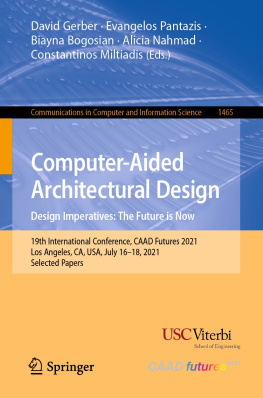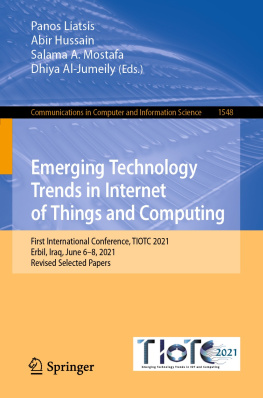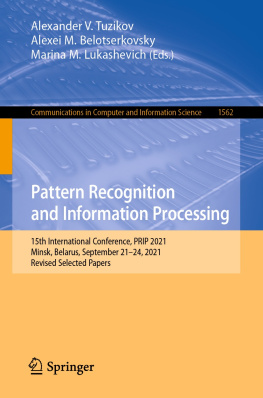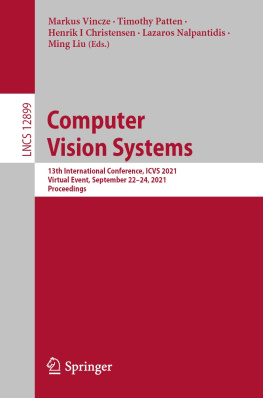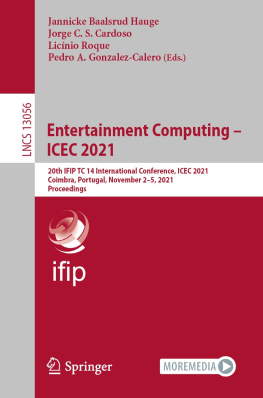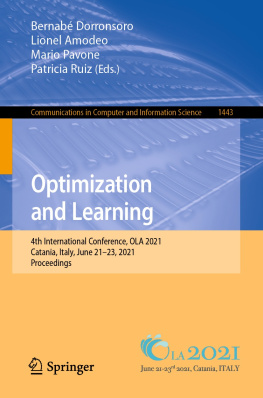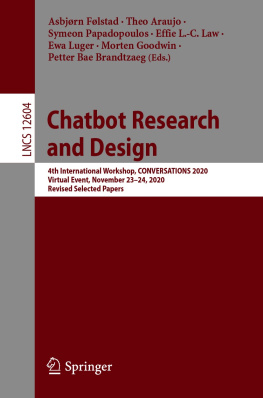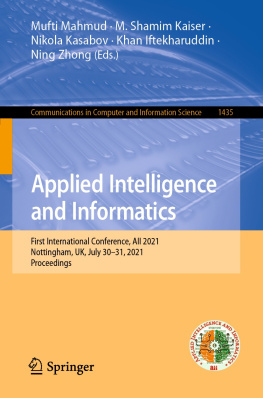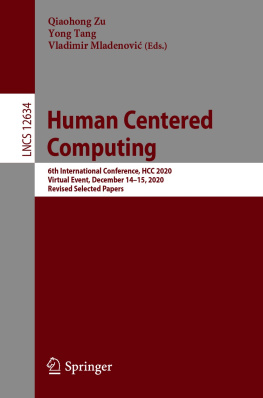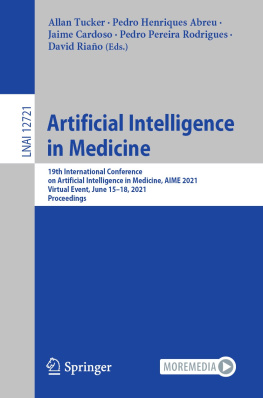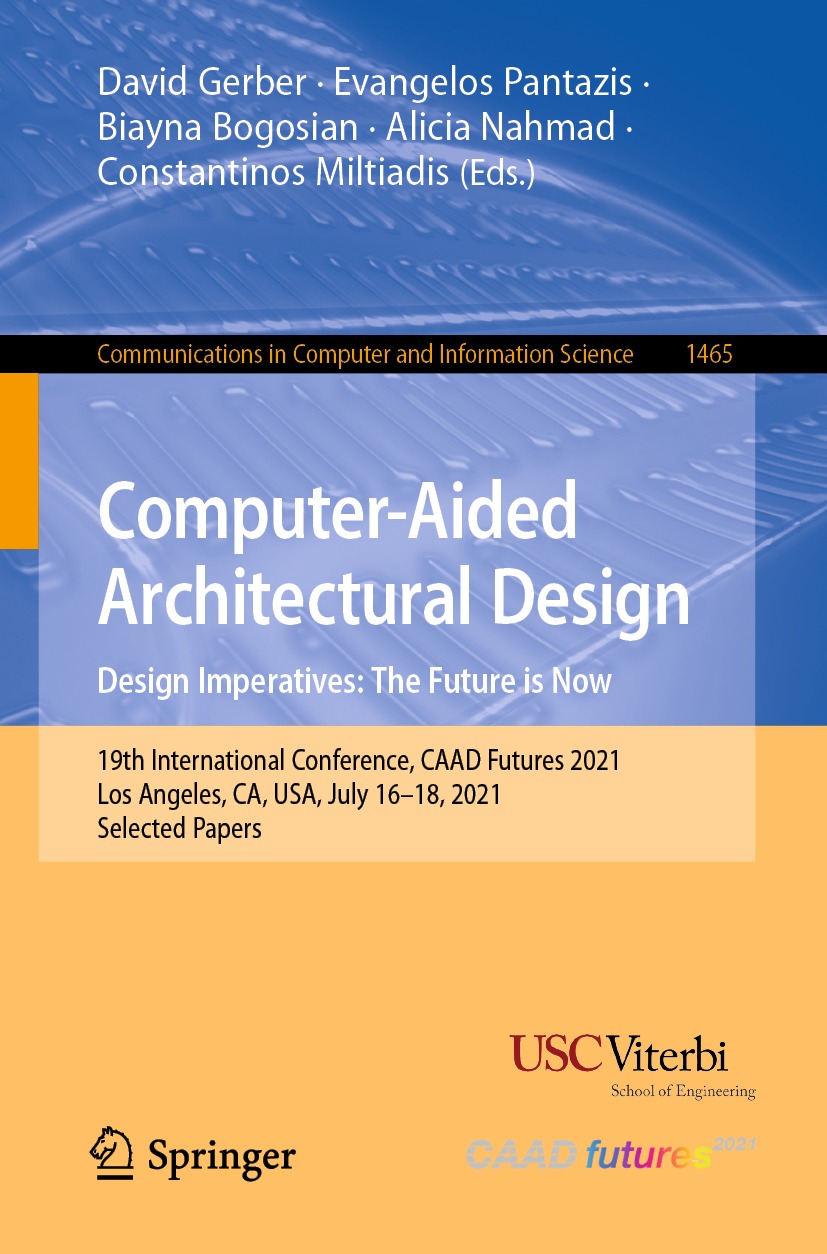Editors
David Gerber
University of Southern California, Los Angeles, CA, USA
Evangelos Pantazis
University of Southern California, Los Angeles, CA, USA
Biayna Bogosian
Florida International University, Miami, FL, USA
Alicia Nahmad
University of Calgary, Calgary, Canada
Constantinos Miltiadis
Aalto University, Espoo, Finland
ISSN 1865-0929 e-ISSN 1865-0937
Communications in Computer and Information Science
ISBN 978-981-19-1279-5 e-ISBN 978-981-19-1280-1
https://doi.org/10.1007/978-981-19-1280-1
Springer Nature Singapore Pte Ltd. 2022
This work is subject to copyright. All rights are reserved by the Publisher, whether the whole or part of the material is concerned, specifically the rights of translation, reprinting, reuse of illustrations, recitation, broadcasting, reproduction on microfilms or in any other physical way, and transmission or information storage and retrieval, electronic adaptation, computer software, or by similar or dissimilar methodology now known or hereafter developed.
The use of general descriptive names, registered names, trademarks, service marks, etc. in this publication does not imply, even in the absence of a specific statement, that such names are exempt from the relevant protective laws and regulations and therefore free for general use.
The publisher, the authors and the editors are safe to assume that the advice and information in this book are believed to be true and accurate at the date of publication. Neither the publisher nor the authors or the editors give a warranty, expressed or implied, with respect to the material contained herein or for any errors or omissions that may have been made. The publisher remains neutral with regard to jurisdictional claims in published maps and institutional affiliations.
This Springer imprint is published by the registered company Springer Nature Singapore Pte Ltd.
The registered company address is: 152 Beach Road, #21-01/04 Gateway East, Singapore 189721, Singapore
Preface
The CAAD Futures 2021 Conference, with the theme Design Imperatives: The Future is Now, was hosted by the University of Southern California (USC) Viterbi School of Engineering and took place virtually during July 1618, 2021. The conference call, formulated during the beginning of the COVID-19 global pandemic, focused on highlighting how computational design research could address the immediate and imminent issues influencing the built environment. This call attracted 97 paper submissions that went through a rigorous double-blind peer-review process resulting in 33 accepted and presented papers through the conference, which attracted 90 registered attendees. The selected papers were presented within seven tracks and are included in the present publication.
In addition to the paper presentations, 28 guest speakers and co-panelists contributed to 13 sessions on a wide range of topics, which complemented and elaborated on the conference theme. Furthermore, 10 selected workshops were conducted involving 26 tutors and 88 participants. The following editorial offers more information and contextualizes the conference.
2021 Conference History and Organization
CAAD Futures 2021 was initiated by David Gerber (of USC) on behalf of the CAAD Futures Foundation, who established the general theme Design Imperatives: The Future is Now. By mid-2020, the organizing committee was assembled to include Biayna Bogosian (of USC and later Florida International University), Evan Pantazis (of USC and IBI Group), Alicia Nahmad (of the Architectural Association and later the University of Calgary), and Constantinos Miltiadis (of Aalto University).
The team commenced conference organization during the height of the COVID-19 pandemic, carrying out weekly remote meetings from July 2020 until July 2021, when the conference took place. Undoubtedly, the ongoing pandemic was an immense challenge for the conference and its organization, which necessitated the team to plan for the contingencies of the circumstances.
The first uncertainty was whether the conference could be hosted in person at USC or if we had to resort to a remote, teleconferencing format. Our initial planning suggested a hybrid format, in which the participants could join remotely or in-person. However, by March 2021, following health and safety directives, it was decided that the conference had to be conducted in a remote virtual format.
Another uncertainty was a concern regarding the impact of the pandemic on research. The regulations imposed on universities across the globe for restricting the spread of the virus had significant repercussions on how the research was carried out. On the one hand, access to labs, infrastructure, and physical spaces for conducting research and experiments was limited. On the other hand, day-to-day activities that inform research, such as teaching, interpersonal communication, and peer-to-peer feedback, also had to adapt to the challenging remote conditions.
In light of the above, the commitment of the organizing committee was to actualize the conference despite all the uncertainties and attempt to organize a significant event for the research community. The drive for the conference organization was based on the fact that the CAAD Futures conferences have been essential discussion hubs for the computational design community and the pandemic, more than anything, highlighted the importance of community building. Also, the distributed nature of the global pandemic has brought to the forefront several previously discussed matters, such as the notion of virtual space and the digitization of our profession. Thus, it was an opportunity to look at these critically and in the light of the conference theme.
On the Open Call and CAAD Futures Conference
The open call was drafted in August 2020 and was developed upon the founding mission of CAAD Futures, established in 1985. The CAAD Futures organization was formed to promote the advancement of Computer Aided Architectural Design in the service of those concerned with the quality of the built environment, to play an active role in promoting research interactions and collaborations, and to facilitate the dissemination of research.
Our principal consideration, 35 years later, was how to reframe promoting the advancement of CAAD when computation and related tools permeate all facets of architecturepractice, education, and researchwhile computation itself has diversified immensely to account for sub-genres, disciplines, and methodologies. Our intention with the call (shared below) was to be inclusive and affirmative to all facets related to computation, to account for the phenomenon at large, and for the conference to serve as a convergence for the different contemporary and relevant streams of research, and their respective researchers.

